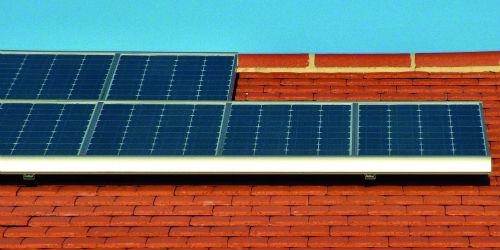 The second part of this article refers to the materials and methods for the operation of a solar air conditioning system, and the conclusions of the research are reached.
The second part of this article refers to the materials and methods for the operation of a solar air conditioning system, and the conclusions of the research are reached.
by Jorge A. Cardona GIL and César A. Isaza*
Materials and methods: The increase in the cost of electricity generation and environmental restrictions have strengthened in the scientific field the research of air conditioning and cooling systems that use the solar resource as a source of motive energy [CITATION Col09 \l 9226].
The energy consumption of the world's population is constantly growing, resulting in the scarcity of natural resources, in addition to generating inconveniences in the environment, such as the thinning of the ozone layer and the greenhouse effect. These effects generate an environmental impact that hardly has a solution, for this reason it becomes a matter of great concern for the governments of many countries and society.
Within this reality, industries perfect their processes by including control systems in order to meet the demands of energy-efficient, environmentally friendly and more competitive equipment. This is the case of systems that operate with solar energy and absorption cooling cycle. The purpose of control systems in a plant with absorption cooling cycle is focused on providing automatic operation where control is too complex for manual operation. These systems maintain control of the conditions that could be achieved by manual operation, by providing maximum efficiency and economy during the process [CITATION Tro00 \l 9226].
The process of producing cold consists of reducing and maintaining the temperature of a space or material below the ambient temperature. For this to happen, it is necessary to extract heat from a low-temperature source and transfer it to a high-temperature source. Under the second law of thermodynamics, for this process of transferring heat from a cold body to a hot one to take place, it is necessary to perform a job, because spontaneously, it cannot occur [CITATION Col09 \l 9226].
Some forms of cold production by means of thermal energy transfer: solar energy collection system, waste heat source, fuel (biomass or fossil) or simply an electrical resistance of a system of transformation of the received energy and a refrigeration system that uses the available solar energy [CITATION Col09 \l 9226].
The absorption cooling system bases its principle on the affinity of certain substances that absorb each other upon contact. Two pairs of substances are commonly used in this type of facility: lithium-water bromide (LiBr-H2O) and ammonia-water (NH3-H2O). The first of these combinations is mostly used for solar-assisted applications due to the non-toxic and non-flammable properties of water as a coolant and the efficiency in terms of energy expenditure [CITATION Col09 \l 9226].
Simple effect absorption cooling systems (with a single generator), powered by solar energy, require the union of several components to obtain proper operation. Among the main components are: the Solar Collectors, the Absorption Machine, the Cooling Tower, a Hot Water Tank, an Auxiliary Heater, an Ice Water Tank and the control system. Figure 1 shows the components necessary for the operation of a solar-powered absorption system.
The use of solar energy in air conditioning systems requires testing or developing innovative solar radiation collection equipment that is economical and efficient; thermodynamic cycles specially adapted to operate under the proposed operating conditions, refrigerants or mixtures of refrigerants and absorbents with special additives that allow to achieve high performances in the operation of the cycle, evaluate, simulate and improve the specific processes of the cycle, such as the absorption process itself; in addition to control systems that allow an excellent integration of the systems of: solar capture, energy storage, cold production, heat rejection, cold storage and the auxiliary or backup subsystem.
The current technology for air conditioning consumes a lot of electrical energy, so it is necessary to establish principles and strategies conducive to the efficient use of energy, in this issue the intelligent control technique that is applied to the system would directly influence. In addition, it is known that certain refrigerants, such as freons, produce an environmental impact when released into the environment, which affects the stratospheric ozone layer and contributes to the greenhouse effect [CITATION Edm87 \l 9226].
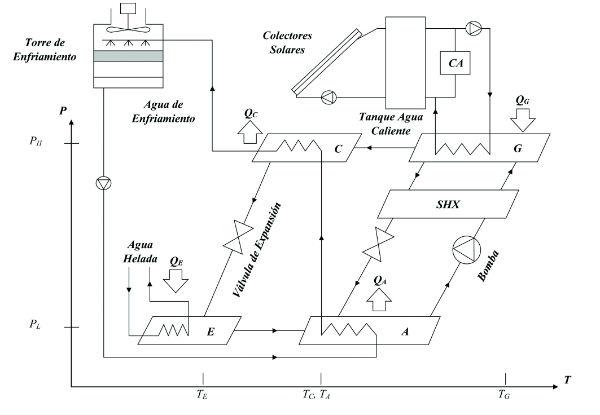
Figure 1. Schematic diagram of a single-effect absorption cooling system with LiBr/Water, operated with solar energy
- Generator (G).
- Capacitor (C).
- Expansion system (Expansion Valve).
- Evaporator (E).
- Absorber (A).
- Auxiliary Heater (AC).
- Hydraulic pump (Pump).
- Heat exchanger between diluted and concentrated solution (SHX).
In addition, the production of cold with thermal energy can make future natural gas conversion projects more attractive, since the products of natural gas combustion are particularly suitable (low dew point temperature) for heat recovery applications, making it possible to integrate heat and cold production processes with the same energy source; by including in some cases the production of electrical energy, from diesel engines, gas turbines, steam cycles and even combustion cells; configurations that are better known as CHP (Cooling, Heat and Power) [CITATION Jav11 \l 9226].
The system shown in this article is planned to be implemented in a real way, for this several elements that make up the solar air conditioning system have been made, among them are the Absorption Machine and the Solar Collectors. These components were listed in the company Shandong Lucy New Energy Technology Co., Ltd [CITATION LUC15 \l 9226] of China, which in addition to offering these products, offers to install the solar air conditioning system with absorption cooling cycle in any building, this structure is shown in Figure 2, it is something very similar to what you want to implement in the UPB, where it is observed that three-way valves, two-way valves and pumps are used to control the flow of water in the system and to be able to generate cooling or heating according to the configuration that you want to establish by allowing or not allowing the passage of water through different circuits of the system. In this case they use a heat exchanger, but with the type of climate of Medellín, which is warm, it is not necessary to use it.
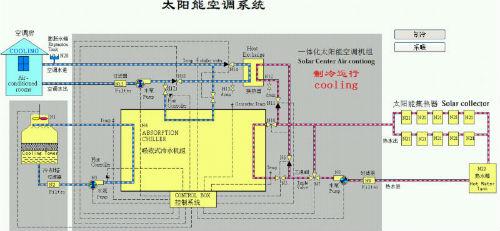
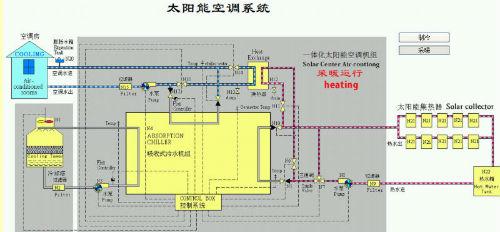
Figure 2. Structure of solar air conditioning system, for cooling and heating, installed by China Shandong Lucy New Energy Technology Co., Ltd. Taken from [CITATION LUC15 \l 9226]
Results and discussion
To perform the simulation of the system, the results of the evaluation of the thermal load were integrated with the single-effect absorption cycle with LiBr/Water and the subsystems of Solar Collectors, Cooling Tower, distribution of ice water and accumulation of ice and hot water; when using the TRNSYS® computer program. The modelling was carried out by parameterizing the components offered by the program in the TESS library, and the following components were used: 12 modules of Solar Collectors each of 20 tubes, the area of each module is 2 m2, they are connected in series and make up a total area of 33 m2; a 17 kW Auxiliary Heater; there are 2 tanks of 250 l, one of hot water and another of ice water; there are several pumps in the different water circuits of the system; an Absorption Machine with a COP of 0.72 and a cooling capacity of 11.5 kW; a Fan-coil of 36000 BTU/hr and an enclosed area with real measures that will be built in the Refrigeration Laboratory of block 8 of the UPB.
For the part of the meteorological data, real data from the city of Medellín were processed through the Meteonorm7® software obtained through the Calaire Laboratory of the National University of Colombia, near the UPB, so that TRNSYS® could understand them in the required formats.
In the simulation model that was carried out, the following results are presented:
It was defined that the appropriate building for the demonstration installation is the UPB refrigeration laboratory (CIRCLI), block 8; in this laboratory there will be a space where the location of some elements of the system has already been thought. The selection of this building is due to the fact that the equipment to be implemented has research and laboratory purposes, it is the right place to compare the system with a conventional one and it is also very suitable for experimentation and operation tests of the demonstration installation.
The simulation presented in this article (see Figure 3) of the demonstration installation, carried out in the TRNSYS® software, shows the application of two PI controls, one for the variation of the fan speed of the Cooling Tower and the other for the ice water fan-coil unit; and two ON-OFF controls, one for the hot water pump of the Solar Collectors, which is disconnected at night so that they are not underused and another for the Auxiliary Heater that is always on to reach a temperature of 90 ° C in the generator of the Absorption Chiller, unless the Solar Collectors manage to reach this temperature in the day, in this case, the Auxiliary Heater turns off immediately.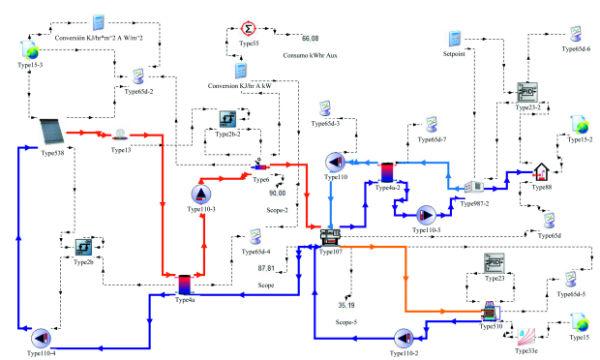
Figure 3. Simulation of the solar air conditioning system and absorption cooling cycle
Tests of the preliminary simulation are carried out in the first week of June 2014 in Medellín, where a high radiation was obtained, and there is a consumption of
66.08 kWhr in the Auxiliary Heater by the solar thermal energy generated in the Solar Collectors (see Figure 4), a good functioning of the air conditioning system at 23 °C (see Figure 5) and the Cooling Tower, which manages to lower the temperature of the cooling water from 35 °C to 30 °C (see Figure 6).
The control techniques applied in this simulation are classic control techniques
(ON-OFF and PI), and through these techniques we want to later apply intelligent control techniques. It is determined that the intelligent control technique that is required to be applied to the air conditioning part of the system, is a fuzzy Logic control technique, which will vary a PI control, that is, a Fuzzy PI control will be applied, to achieve design this control its heuristic model will be obtained by experimenting with the simulation in the TRNSYS® software, to work over a relatively wide range. The hot water circuit will continue with two ON-OFF controls and the cooling water circuit with a PI control, in which a constant flow of water will be maintained. For the ice water circuit the constant water flow in the pumps of the circuit will be maintained, but it will be varied through valves. To this simulation more elements will be added to focus more on reality, among these elements are the pipes and valves, this will allow to have a solid base for the real implementation of the system.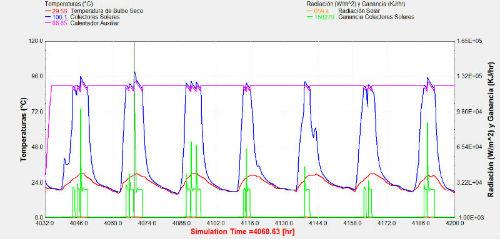
Figure 4. Solar Collectors and Auxiliary Heater in operation during the first week of June 2014
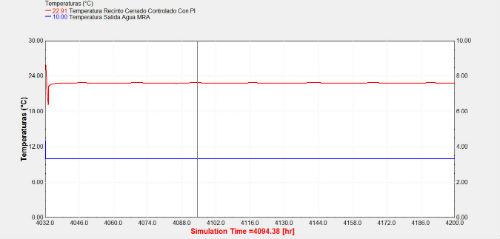
Figure 5. Temperature of the enclosed area controlled with PI and the Absorption Chiller
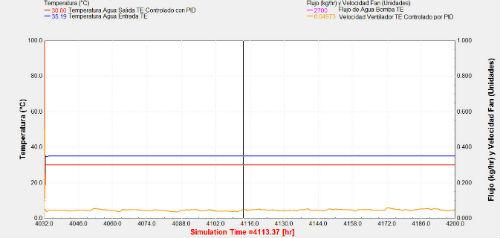
Figure 6. Cooling Tower water inlet and outlet temperature and PI-controlled fan speed
Each graph shows the operation of the simulation seen in Figure 3 in the TRNSYS® software. In Figure 4 the ON-OFF control applied to the Auxiliary Heater acts when the temperature in the Solar Collectors reaches the reference of 90 ° C and immediately turns off the Auxiliary Heater, this generates energy savings in the operation of the system; Figure 5 shows the temperature of the ice water outlet of the Absorption Machine and how the PI control applied to the Fan-coil acts so that in the enclosed area a temperature of 23 °C is achieved; and Figure 6 shows how a PI control acts on the speed of the cooling tower fan, to control the temperature of the outlet water at 30 °C before a 35 °C water inlet from the Absorption Machine.
Conclusions
Carrying out this project generates great technological advances for the refrigeration and air conditioning industry in Colombia, since a renewable energy method is obtained, such as solar energy, which is practically infinite and does not generate pollution to the environment.
The simulated solar air conditioning system presents a non-linear behavior in the air conditioning part, since environmental conditions and thermal loads influence, disturb and change constantly over time, which is why an intelligent control technique is quite decisive in the stabilization of the temperature variable, which is the controlled variable.
For many cooling applications in buildings and industrial processes, an absorption system can be considered an environmentally responsible choice.
By using water as a coolant, mixed with a chemical salt and non-toxic corrosion inhibitors, it avoids the use of CFCs, HCFCs and HFCs, as well as handling, availability and transportation.
The simulation of the solar air conditioning system in the TRNSYS® software, thanks to the TESS library and its focus on solar-powered systems, and with meteorological data processed in Meteonorm7®, allow to obtain answers very close to reality and generate a solid basis to carry out this type of installations in reality without hesitation.
* Research Group in Energy and Thermodynamics GET, Faculty of Mechanical Engineering, Universidad Pontificia Bolivariana. For more information you can write to the email [email protected]
References
[1] LEED, "LEED-USGBC," Green Building Council, 2008. [Online]. Available in: http://www.usgbc.org/LEED.
[2] Air Conditioning, "Description of the Different Types of Air Conditioning," 2015. [Online]. Available in: http://www.elaireacondicionado.com/tipos_aire_acondicionado/.
[3] W. Sparber, A. Napolitano and P. Melograno, "Overwiew On World Wide Installed Solar Cooling Systems," October 2007. [Online]. Available in: http://task38.iea-shc.org/data/sites/1/publications/task38-Overview.pdf.
[4] D. Wuebbles, "The role of refrigerants in climate change," 1994. [Online]. Available in: http://www.sciencedirect.com/science/article/pii/0140700794900825.
[5] J. P. Pérez, "Experimentation of new configurations aimed at improving THE COP in vapor compression cycles using CO2
as a refrigerant,» May 2013. [Online]. Available in: http://www.git.uji.es/investigacion/docs_investigacion/Tesis_Jorge%20Patino_UJI_2013.pdf.
[6] A. R. Trott and T. Welch, "Refrigeration and air-conditioning," 2000. [Online]. Available in: http://ezproxy.library.uwa.edu.au/login?url=http://www.engineeringvillage2.org/controller/servlet/OpenURL?genre=book&isbn=075064219x .
[7] J. Meza, J. González and A. Khan, "Experimental assessment of a solar assisted air conditioning system for applications in Puerto Rico," 1998.
[8] J. Fernández-Seara and M. Vázquez, «Study and control of the optimal generation temperature in NH3-H2O absorption refrigeration systems,» 2001. [Online]. Available in: http://www.sciencedirect.com/science/article/pii/S1359431100000478.
[9] J. Wang and Y. Wu, "Start-up and shut-down operation in a reciprocating compressor refrigeration system with capillary tubes," 1990. [Online]. Available in: http://www.sciencedirect.com/science/article/pii/0140700790900747.
[10] M. Z. García, "Industrial Optimization and Control Strategy of an Ammonia/Lithium Nitrate Absorption Chiller with Air Dissipation," 2012. [Online]. Available in: http://tdx.cat/handle/10803/284083.
[11] P. Kohlenbach, "Solar cooling with absorption chillers: Control strategies and transient chiller performance," January 2006. [Online]. Available in: https://opus4.kobv.de/opus4-tuberlin/files/1271/kohlenbach_paul.pdf.
[12] H. Fallahsohi, C. Changenet, S. Placé, C. Ligeret and X. Lin-Shi, "Predictive functional control of an expansion valve for minimizing the superheat
of an evaporator," 2010. [Online]. Available in: http://www.sciencedirect.com/science/article/pii/S0140700709002424.
[13] H. Vidal and D. P. Mansilla, "Optimization of a Solar Energy-Assisted Absorption Cooling System Using TRNSYS," November 2009. [Online]. Available in: http://www.frioycalor.cl/99/tema2.htm.
[14] L. A. Bujedo, J. Rodríguez, P. J. Martínez, «Experimental results of different control strategies in a solar air-conditioning system at part load,» 2011. [Online]. Available in: http://www.sciencedirect.com/science/article/pii/S0038092X11000922.
[15] J. Lygouras, P. Botsaris J. Vourvoulakis and V. Kodogiannis, "Fuzzy logic controller implementation for a solar air-conditioning system," 2007. [Online]. Available in: http://www.sciencedirect.com/science/article/pii/S0306261906001462.
[16] E. Quintana and R. Díaz, "Simulation of an Air Conditioning System by Absorption with Solar Assistance in Panama Using TRNSYS," December 2013. [Online]. Available in: http://www.utp.ac.pa/documentos/2014/pdf/ID_92_Articulo_6.pdf.
[17] H. Vidal and S. Colle, "Hourly Simulation of a Combined Refrigeration System Ejector-Vapor Compression Assisted by Solar Energy and Natural Gas," March 2009. [Online]. Available in: http://www.scielo.cl/scielo.php?pid=S0718-33052009000100007&script=sci_arttext.
[18] J. Edmonds, D. Wuebbles and M. Scott, "Energy and radiative precursor emissions," December 1987. [Online]. Available in: http://www.osti.gov/scitech/biblio/6468199#cite-bib.
[19] J. Duarte, "Cogeneration in Energy Efficient Buildings," November 2011. [Online]. Available in: http://www.upme.gov.co/Docs/Seminarios/2011/EEE/5%20JAVIER%20DUARTE.pdf.
[20] LUCY, "Shandong lucy new energy technology co.,ltd," 2015. [Online]. Available in: http://www.lucysolar.com/shouye.asp.



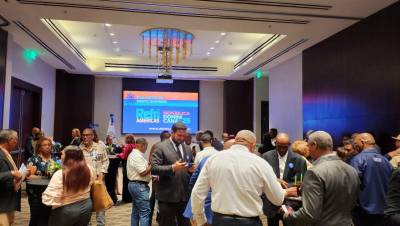
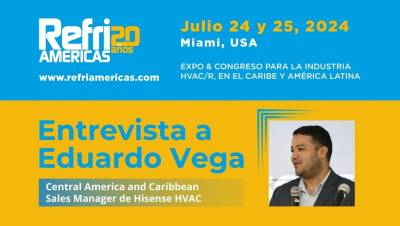
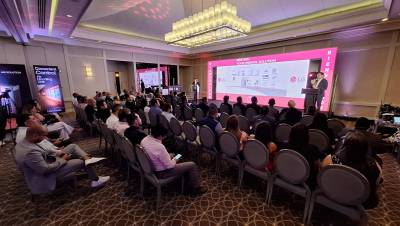
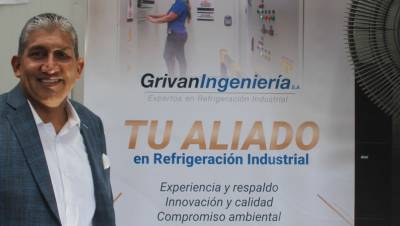
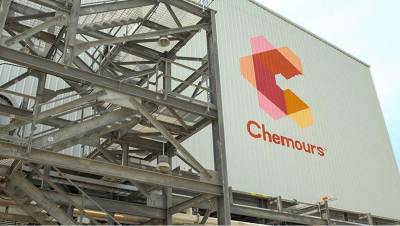
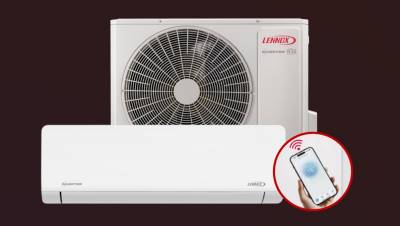

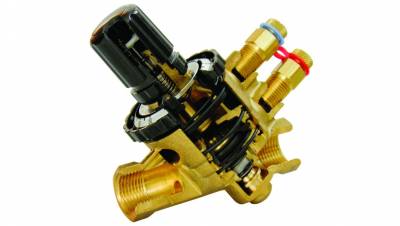
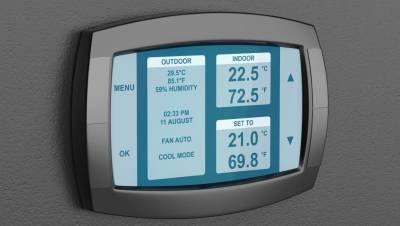
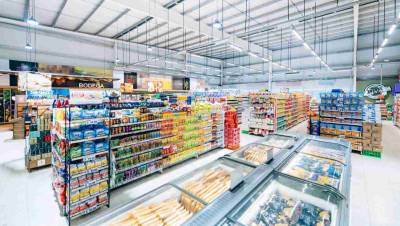
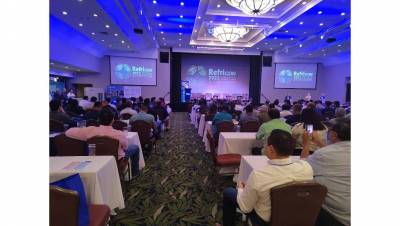
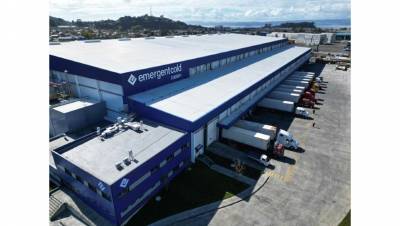
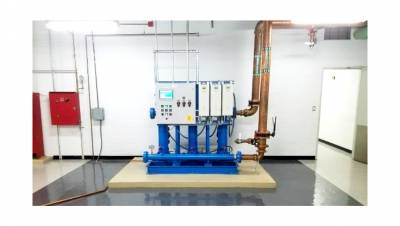
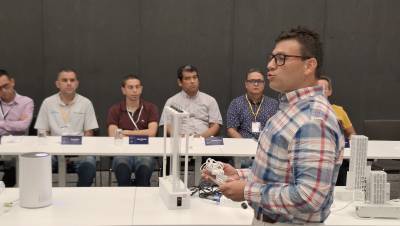
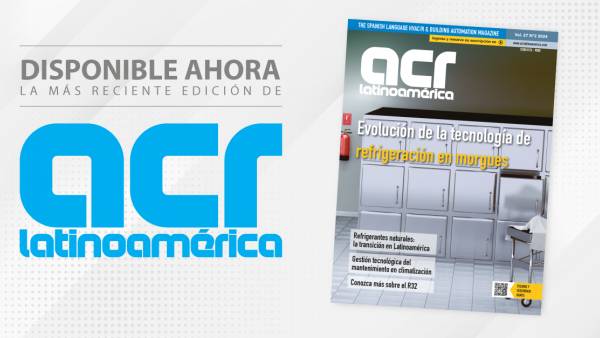







Leave your comment